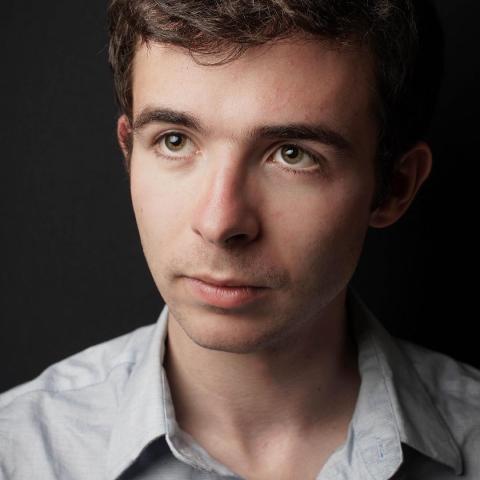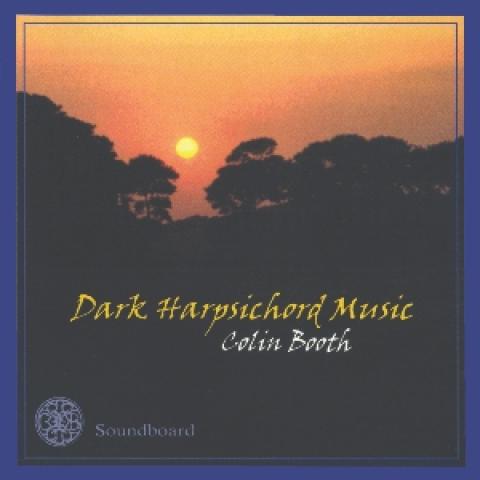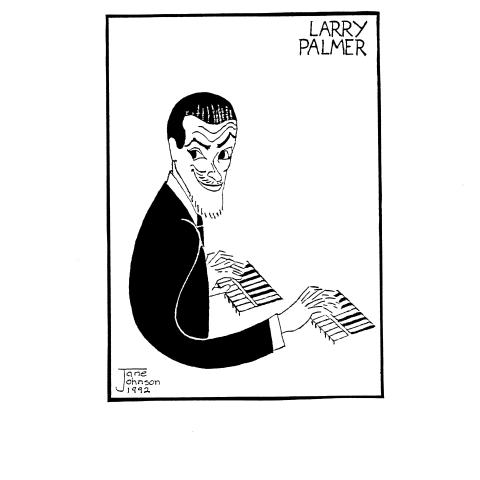
Jane Clark: “D’un goût nouveau:” the influence of Evaristo Gherardi’s Théâtre italien in François Couperin’s Pièces de Clavecin
In the Preface to his first book of harpsichord pieces, Couperin praised the work of his “forbears” saying that their music still appealed to people of “refined taste” (ceux qui l’ont exquis). “As for my pieces,” he adds, “their new and diversified character has assured them a favorable reception with the people who matter (le monde).” He also said the pieces were ideas that had occurred to him and that many of them were portraits. Titon du Tillet, in Le Parnasse François, wrote that Couperin’s Pièces de Clavecin were “d’un goût nouveau,” in a new style. He said the same of the playwright Charles Dufresny, writing that the author understood music perfectly and that his lively portraits of almost all the different characteristics of mankind were “d’un goût nouveau.” Was the playwright perhaps an influence?
There is a play by Dufresny called Les Mal-assortis. The stage represents the Room of the Ill-matched Couples where Hymen, god of marriage ceremonies, sits among couples with their backs to one another. He is sitting under a dead tree on which perch birds of evil-omen: cuckoos, owls, and bats. Couperin’s piece, L’Himen-amour (Married Love) from the 16th Ordre, mimics cuckoos (measures 18–22 and 41–43 in the bass), owls (measures 18–21 and 34–36), and bats (measures 30–32), and wedding bells are heard briefly in measure 5. Almost certainly Dufresny was one of Couperin’s inspirations. Like the play, the composer’s piece is a powerful and often sad satire of a universal human condition.
Marked majestueusement, the piece refers back to the previous piece in the 16th Ordre, Les Graces incomparables ou La Conti, also marked majestueusement, a radiant portrait of the popular Prince de Conti, whose marriage was not a great success. We know it to be this Conti because Saint Simon, who was very fond of him, tells us he had a laugh like the braying of an ass (measures 9 and 15). He was also a great patron of the theater. Thus we have had an idea from the theater and a portrait. It seems that many of Couperin’s contemporaries did not understand this “new and diversified character:” “I am always astonished,” he said in the Preface to Book III,
after the pains I have taken to indicate the appropriate ornaments for my pieces, to hear people who have learnt them without heeding my instructions. Such negligence is unpardonable, the more so as it is no arbitrary matter to put in any ornament one wishes. I therefore declare that my pieces must be performed just as I have marked them, and that they will never make much of an impression on people of real discernment if all that I have indicated is not obeyed to the letter, without adding or taking away anything.
Perhaps one example may bring this home. The allemande La Verneüil is presumably a portrait of Achile Varlet, seigneur de Verneüil, a great tragic actor. His wife was a soubrette actress, the subject of the next piece in the 18th Ordre, La Verneüilléte. Couperin has marked ports de voix in the middle of many of the chords, but almost always this important ornament is simply played as part of a spread chord (measures 1, 5, 18, and 19). Surely this is “unpardonable negligence” and reduces this wonderful piece to just one more beautiful allemande. But if the “appropriate ornament” is played the great actor declaims his tragic speech. It is easy to see how one ornament can change the whole meaning of a piece.
But who were “the people who matter,” “le monde?” We know Couperin played at the salon of Mme. de Lambert and that Louis III de Condé employed him to teach his children and engaged him to entertain his guests. A member of his father’s household was La Bruyère, whose literary Caractères, a copy of which Couperin possessed, were clearly an influence. Condé’s sister, and cousin of the Prince de Conti, la duchesse du Maine, was a friend of Mme. de Lambert. All these people were patrons of the great Harlequin, Evaristo Gherardi’s Italian comedians. Dufresny’s play, Les Mal-assortis, comes from the collection published by Gherardi, Le Théâtre italien. There are many specific references to these plays among Couperin’s harpsichord pieces. It is interesting that Charles Couperin, François’s father, taught the duchesse d’Orléans who was the dedicatee of this publication.
As time went on the plays became more and more subversive. They satirized Lully’s operas, thus satirizing the glory of the King who eventually banned the troupe. The reason for this is not clear, but contributing factors included obscenity and that they had overstepped the mark with comments about the unpopular Mme. de Maintenon. However, perhaps the real reason was the subversive undercurrent, with which the patrons would have sympathized. Mme. de Maintenon was a lady of reforming zeal, and she slowly turned the court into what one courtier called “a monastery in court dress.” The courtiers resented this. From 1688, for most of the rest of Louis XIV’s reign, France was at war and conditions at home became appalling for many people, so discontent and subversion rumbled on every side.
Another piece that takes its inspiration from the theatre is L’Arlequine from the 23rd Ordre. It refers to a play by Regnard, Le Divorce, in which Gherardi made his debut, and is a harlequin chaconne. At the beginning Couperin is imitating a fairground organ, remembering that after the troupe was banned the actors took refuge in the fair theatres. The passage of discords towards the end (measures 25–31) is inspired by a scene from Le Divorce in which Harlequin is singing a duet with Mezzetin, the singing master. Harlequin’s efforts are a disaster and Mezzetin pleads, “Do please sing in tune.” Harlequin replies, “Oh, sing in tune yourself, do you think I don’t know that it’s necessary to mark a dissonance there, and that the octave comes in clashing with the unison, forming a B-sharp minor.” Like so much of Book IV, this piece has an element of nostalgia. The previous piece in the 23rd Ordre, L’Audacieuse, refers to Gherardi’s debut, known as la tentative audacieuse.
Sometimes a title seems obvious when it is not. La Sophie from the 26th Ordre is not a pretty girl, but rather a play, Mezzetin en Grand Sofi, which revealed the true meaning, a whirling dervish. Couperin portrays the whirling throughout the piece. To dress La Sophie in pretty girls’ clothes makes a mockery of the music. It comes between the nostalgic Gavotte and the heart-rending portrait of Maria Teresa d’Orsi, L’Epineuse, the Spinetta of Gherardi’s troupe, in the 26th Ordre. Couperin’s theatrical sense never allows him to put three gentle pieces in a row. The final piece, La Pantomime, is described by Gherardi. Scaramouche sits playing his guitar; Pasquariel comes up noiselessly behind him and beats time on his shoulder scaring him stiff:
It was in this pantomime of terror that he made his audience rock with laughter for a good quarter of an hour, without once opening his mouth to speak. He possessed this marvelous talent to such a remarkable degree, that he could, by the simplicity of pure nature alone, touch hearts more effectively than the most expert orators.
The tragicommedia aspect of the plays is strong in this particular piece.
Another reference to Gheradi’s Théâtre is Le Gaillard-Boiteux from the 18th Ordre. It mocks a dancing master at Versailles, Jean Gaillard. In Regnard and Dufresny’s play Les Chinois we are told the actors are going to mock themselves at last: “There is not a profession that has escaped their satire; Attorneys, Doctors, Magistrates. They have not even respected Roman Emperors or dancing masters.” In the scene, from Boisfran’s Arlequin misanthrope, the dancing master has a wooden leg. Harlequin asks: “And what is your profession?” Colafon: “I was the dancing master at the opera house in Lyon, but as the opera has
fallen . . .” Harlequin: “It fell on you I suppose, and there you are, completely crippled?” Marked dans le gout Burlesque this piece limps along cheerfully.
People have wondered at the sexy words of Couperin’s canons but a glance at Gherardi’s Théâtre reveals similar sexual references. Couperin’s Les Culbutes Jacobines from the 19th Ordre is about somersaulting in bed. These are the somersaults of the Jacobin order of monks and nuns, whose fallen morals were the subject of many satirical poems. If all Couperin’s detailed markings, which include the slurs, commas, and aspirations, are obeyed the piece becomes a sexy romp. Those who attended the salons and appreciated the theatre were among those known as Le Monde. They were in a position to appreciate Couperin’s “new and diversified character,” rather than those of “refined taste” who appreciated his forbears.
His references to the play Les Chinois in his final valedictory 27th Ordre fit the stage directions so exactly it is likely they started as incidental music. The troupe had a large orchestra and these pieces feel like arrangements. The scene referred to satirizes Apollo and the Muses on Mount Parnassus, which implied the whole edifice of the court of Versailles. Pegasus (symbol of literature), portrayed as a winged ass, keeps interrupting the conversation, and when Apollo asks Thalia why the authors have not fed him she says, “The poor devils can scarcely feed themselves these days, you can’t get fat on chewing laurels,” a reference to the fact that the king had withdrawn his support for the troupe. The piece opens with the same figure used for the braying of the ass in La Conti. Later the stage directions instruct that an ensemble of comic instruments is heard. These appear in the second part of the piece.
Les Vieux Seigneurs followed by Les Jeunes Seigneurs, Cy-devant les petit Maîtres from the 24th Ordre proves that Couperin was influenced by Dufresny. In Les Vieux Seigneurs Couperin satirizes obsequious courtiers. To quote Dufresny, from Les Amusemens sérieux et comiques, “The courtier thinks carefully before he speaks, the petit maître talks a lot and scarcely thinks at all . . .”
The courtiers flatter those they scorn, what dissimulation. The petit Maîtres are more sincere, they hide neither their friendship nor their scorn. The courtier’s speech is uniform, always polite, flattering, never direct. The speech of the petit Maître is high and low, a mixture of the sublime and the trivial. The first part is a mixture of “high and low” motifs and idle chatter while the second, still “high and low,” is beautiful. Les Vieux Seigneurs, if all Couperin’s markings are obeyed, is, once again, an apt portrait. Les Jeunes Seigneurs chatter away both high and low during the “trivial” first half, but the second part is “sublime.”
In the final piece of this Ordre, L’Amphibie, we are back where we started, showing Couperin’s sense of symmetry. Here we must be mindful of eighteenth-century meanings. La Bruyère used the term amphibious to describe the ambitious courtier. Similarly Alexander Pope was scathing in his portrait of Lord Hervey: “Amphibious thing! That acting either part, The trifling head, or the corrupted heart, Fop at the toilet, flatterer at the board, Now trips a lady, and now struts a Lord.” A speech from Boisfran’s Les Bains de la Porte Saint Bernard describes a Lutin Amphibie, who ordains that: “The young men of fashion are by pleasures, by appearances, by gait, by patches, and by manners made less men than women.”
The ambiguity is reflected throughout L’Amphibie. Marked noblement, at the beginning, it is indeed noble, but gradually gives way to “Wit that can creep and pride that licks the dust,” to quote Pope again. We go through caution at the court, obsequious bows, pleading, seeming success, sudden disillusion, anger, resignation, till finally, nobility returns, but with a startling G-natural, which can perhaps imply scorn at the dissimulation needed for success. Recent research has shown that Couperin worked very little at Versailles apart from his organist’s post for three months a year. He was probably a bad courtier himself. Clearly he felt great sympathy with the values expressed in Evaristo Gherardi’s Théâtre italien.
Jane Clark is well known as a harpsichord recitalist in Europe and the United States. Her research into the music of François Couperin and Domenico Scarlatti has received international recognition. The Mirror of Human Life: Reflections on F. Couperin’s Pièces de Clavecin (written in collaboration with Derek Connon) explores the background to these pieces and offers suggestions as to the meaning of many elusive titles. David Tunley, writing in Music and Letters (May 2012) suggested that “this book should be within arm’s reach in every studio where Couperin’s music is loved and practiced.”







